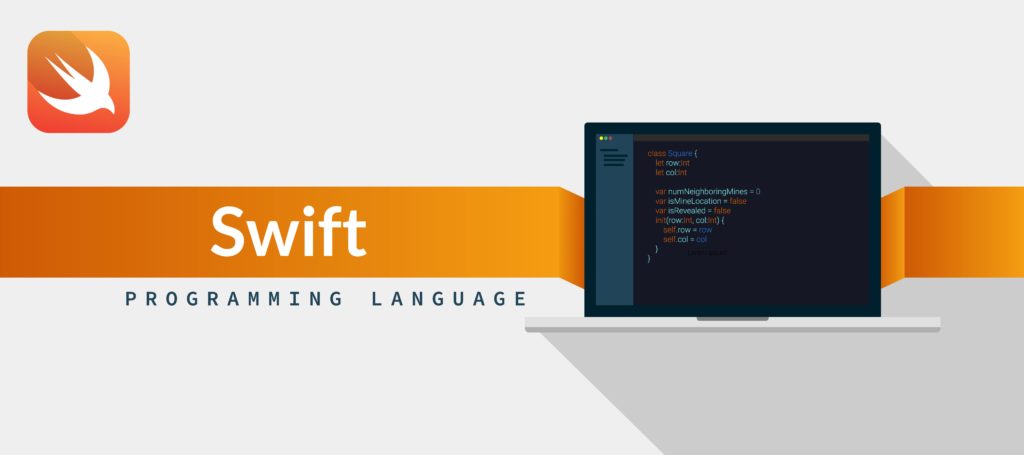(Swift for Beginners)
Swift Recursion
In this article, you will learn to create a recursive function; a function that calls itself.
A function that calls itself is known as a recursive function. And, this technique is known as recursion. While creating a recursive function, you must create a condition so that the function does not call itself indefinitely (infinitely).
How recursion works in Swift?
func recurse() {
//statements
recurse()
}
recurse()
The figure below shows how recursion works by calling itself over and over again.

In the above flow diagram, the recursion executes infinitely. However, almost all of the times, you create a recursion that executes until some condition is met.
To prevent infinite recursion, use the recursive call inside the Swift Conditional Statements e.g. if…else statement.
Example 1: Print N positive numbers
func countDownToZero(num: Int) {
print(num)
if num > 0 {
countDownToZero(num: num - 1)
}
}
print("Countdown:")
countDownToZero(num:3)
When you run the following program, the output will be:
Countdown: 3 2 1 0
In the above program, the statement print("Countdown:") outputs Countdown: in the console. And the statement countDownToZero(num:3) calls the function that takes a parameter Integer.
The statement inside the function countDownToZero() executes and if the condition num > 0 is met, the function countDownToZero() is called again as countDownToZero(num: num - 1).
If condition is not met, the function call is not done and the recursion stops.
Let’s see this in steps
| Steps | Function call | Printed | num > 0 ? |
|---|---|---|---|
| 1 | countDownToZero(3) |
3 | Yes |
| 2 | countDownToZero(2) |
2 | Yes |
| 3 | countDownToZero(1) |
1 | Yes |
| 4 | countDownToZero(0) |
0 | No (Ends) |
Example 2: Find factorial of a number
func factorial(of num: Int) -> Int {
if num == 1 {
return 1
} else {
return num * factorial(of:num - 1)
}
}
let x = 4
let result = factorial(of: x)
print("The factorial of (x) is (result)")
When you run the following program, the output will be:
The factorial of 4 is 24
How this example works?

Let’s see this in steps
| Steps | Argument passed | Return statement | Value |
|---|---|---|---|
| 1 | 4 | return 4 * factorial(of:3) |
4 * factorial(of:3) |
| 2 | 3 | return 3 * factorial(of:2) |
4 *3 * factorial(of:2) |
| 3 | 2 | return 2 * factorial(of:1) |
4 * 3 *2 * factorial(of:1) |
| 4 | 1 | return 1 |
4 * 3 * 2 * 1 |
Usually recursion is used as a replacement of iteration when the solution to a problem can be find in about two steps. The first step searches a solution, if not repeat the process.
Swift programming for Beginners – Swift Recursion
Disclaimer: The information and code presented within this recipe/tutorial is only for educational and coaching purposes for beginners and developers. Anyone can practice and apply the recipe/tutorial presented here, but the reader is taking full responsibility for his/her actions. The author (content curator) of this recipe (code / program) has made every effort to ensure the accuracy of the information was correct at time of publication. The author (content curator) does not assume and hereby disclaims any liability to any party for any loss, damage, or disruption caused by errors or omissions, whether such errors or omissions result from accident, negligence, or any other cause. The information presented here could also be found in public knowledge domains.
Learn by Coding: v-Tutorials on Applied Machine Learning and Data Science for Beginners
Latest end-to-end Learn by Coding Projects (Jupyter Notebooks) in Python and R:
All Notebooks in One Bundle: Data Science Recipes and Examples in Python & R.
End-to-End Python Machine Learning Recipes & Examples.
End-to-End R Machine Learning Recipes & Examples.
Applied Statistics with R for Beginners and Business Professionals
Data Science and Machine Learning Projects in Python: Tabular Data Analytics
Data Science and Machine Learning Projects in R: Tabular Data Analytics
Python Machine Learning & Data Science Recipes: Learn by Coding
R Machine Learning & Data Science Recipes: Learn by Coding
Comparing Different Machine Learning Algorithms in Python for Classification (FREE)
There are 2000+ End-to-End Python & R Notebooks are available to build Professional Portfolio as a Data Scientist and/or Machine Learning Specialist. All Notebooks are only $29.95. We would like to request you to have a look at the website for FREE the end-to-end notebooks, and then decide whether you would like to purchase or not.
